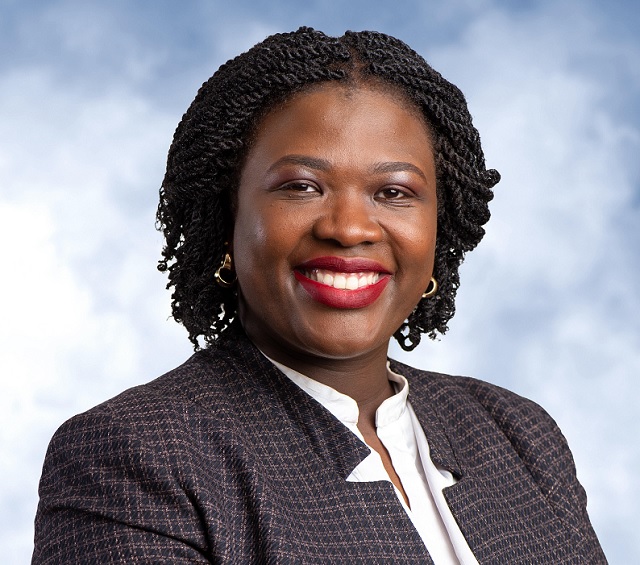
Kampala Uganda | PATRICIA AKANKWATSA | In commemoration of March as Women’s Month, a time to consciously celebrate the achievements of women while committing to doing more to enable gender equality, Patricia Akankwatsa of The Independent spoke to Hope Ekudu the Chief Operating Officer at dfcu Bank about “Driving inclusion from the Top”, and what it means to her individually, and as a member of the Executive Team at dfcu.
What do Diversity and Inclusion mean to you and why should organisations make them a central part of both their short and long-term goals?
Imagine having to drive from Kampala to Entebbe with two other people in the car. All of you may have preferred routes, all options have merit and if you have an open discussion at the start of the trip, many times, you will pick one route that everyone is comfortable with leading to fewer complaints about time spent.
Diversity and inclusion are like that journey; they are about recognising that each person can make a positive contribution regardless of age, tribe, gender, or religion. But more than that, it means providing a platform for those voices to be heard and taking action.
If an organisation can weave this belief within the fabric of its culture, it will have ready ambassadors willing to go the extra mile to deliver. Our vision as dfcu is “To Transform Lives and Businesses through Innovative Solutions and Empowered People.” We, therefore, keep people at the centre of our decisions as they are the key to delivering any goals.
Personally, how has your career been enhanced by exposure to diverse cultures, places, experiences, and people?
My first job was with an international company that had an established diversity and inclusion programme. This laid the foundation for awareness, understanding and appreciation of people’s differences. Since then, I have had opportunities to work with managers (male and female) of various ages and nationalities that have mentored me and challenged me to learn new tactics and approaches that have honed my abilities and enabled me to build resilience.
I particularly remember one boss who would correct my documents about five times before they got signed off. In addition, he was only available to consult before 8 am and after 6 pm. It was very frustrating at the time but looking back, he taught me a great lesson about accepting feedback, having structure, and setting standards. He also taught me to avoid meeting after 6 pm!
How can leaders advocate for diversity and inclusion with colleagues who don’t understand their importance?
Whenever I am faced with someone who is resisting an idea, I ask myself what could be driving them. Are they logical and need to understand principles? Are they interested in how this idea/proposal will lead to financial benefit? Are they more humane and looking for how they can contribute? If leaders can start by understanding why, we can then respond accordingly and drive alignment in hearts and minds. I have found that sharing my personal experiences helps frame the discussion and dialogue.
As a team leader, how would you make your direct reports feel a sense of belonging, inclusion, and equity daily?
One of my earliest lessons was, to as much as possible, adjust my approach according to the individual that I directly manage.
For example, I will use the means of communication that the person prefers; some people like to speak over the phone, others physically, and others by email.
I currently have 6 direct reports and about 180 staff under my management, so collaboration is extremely important. I frequently have joint discussions with my direct reports on anything that will have an impact on our wider teams and where possible, get their buy-in before we proceed. This means that any concerns are dealt with and the approach with the larger group of staff is tailored according to their unique needs.
How diverse is the Executive Team at dfcu Bank?
Out of the current 6 executive committees (EXCO) members, 4 are ladies. I think that immediately speaks to the tone set from the top about diversity and inclusion. With this example, our staff can aspire for leadership roles regardless of gender and this same attitude is cascaded through the programmes both internally and externally that we promote actively and consistently. One of our flagship propositions is the Women in Business Program which drives the inclusion of female entrepreneurs by offering specially tailored financial solutions in predominantly male industries.
What would you list as 3 common barriers to diversity and inclusion that are also blind spots which leaders should look out for as they guide their companies to achieve their strategic goals?
One common blind spot is unconscious bias. This refers to the inbred preference for those like us and could be in terms of age, gender, or any other affiliation. Because bias is not intentional, as you decide on someone, you have to keep asking yourself whether it’s because of any unfair preferences or prejudices that you might have.
Another barrier is the lack of awareness about inclusion or diversity. As the world keeps evolving, the understanding of these concepts keeps getting more nuanced and the onus on us as leaders are to keep abreast to unlearn, learn and relearn.
The third barrier in my view is communication issues. When you are looking to drive inclusion, you will have situations where people from different backgrounds or categories may misunderstand each other. This leads to the frustration of the people we lead. It is important to have standards and guidelines and the means of communication to remove these potential barriers.
 The Independent Uganda: You get the Truth we Pay the Price
The Independent Uganda: You get the Truth we Pay the Price



